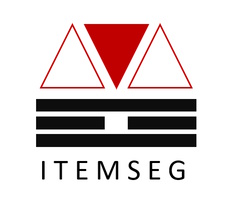10-K Report Item Segmentation with Line-based Attention (ISLA)
Project description
itemseg
10-K Item Segmentation with Line-based Attention (ISLA) is a tool to process EDGAR 10-K reports and extract item-specific text.
Table of Contents
Installation
pip3 install itemseg
Download resource file
python3 -m itemseg --get_resource
Download nltk data
Launch python3 console
>>> import nltk
>>> nltk.download('punkt')
Segment items in a 10-K file
Using Apple 10-K (2023) as an example:
python3 -m itemseg --input https://www.sec.gov/Archives/edgar/data/320193/000032019323000106/0000320193-23-000106.txt
See the results in ./segout01/
The *.csv file contain line-by-line prediction for items in a Begin-Inside-Outside (BIO) style tags. Other files contain item-sepcific text. Change output file types via --outfn_type.
About 10-K files.
A 10-K report is an annual report filed by publicly traded companies with the U.S. Securities and Exchange Commission (SEC). It provides a comprehensive overview of the company's financial performance and is more detailed than an annual report. Key items of a 10-K report include:
- Item 1 (Business): Describes the company's main operations, products, and services.
- Item 1A (Risk Factors): Outlines risks that could affect the company's business, financial condition, or operating results.
- Item 3 (Legal Proceedings)
- Item 7 (Management’s Discussion and Analysis of Financial Condition and Results of Operations; MD&A): Offers management's perspective on the financial results, including discussion of liquidity, capital resources, and results of operations.
You can search and read 10-K reports through the EDGAR web interface. The itemseg module takes the URL of the Complete submission text file, convert the HTML to formated txt file, and segment the txt file by items.
As an example, the AMAZON 10-K report page for fiscal year 2022 shows the link to the HTML 10-K report and a Complete submission text file 0001018724-23-000004.txt. Pass this link (https://www.sec.gov/Archives/edgar/data/1018724/000101872423000004/0001018724-23-000004.txt) to the itemseg module, and it will retrive the file and segment items for you.
python3 -m itemseg --input https://www.sec.gov/Archives/edgar/data/1018724/000101872423000004/0001018724-23-000004.txt
The default setting is to output line-by-line tag (BIO style) in a csv file, together with Item 1, Item 1A, Item 3, and Item 7 in separate files (--outfn_type "csv,item1,item1a,item3,item7"). You can change output file type combination with --outfn_type. For example, if you only want to output Item 1A and Item 7, then set --outfn_type "item1a,item7".
If you are trying to process large amounts of 10-K files, a good starting point is the master index (https://www.sec.gov/Archives/edgar/full-index/), which lists all available files and provides a convenient venue to construct a comprehensive list of target files.
The module also comes with a script file that allow you to run the module via itemseg command. The default location (for Ubuntu) is at ~/.local/bin. Add this location to your path to enable itemseg command.
License
itemseg is distributed under the terms of the CC BY-NC license.
Project details
Release history Release notifications | RSS feed
Download files
Download the file for your platform. If you're not sure which to choose, learn more about installing packages.














